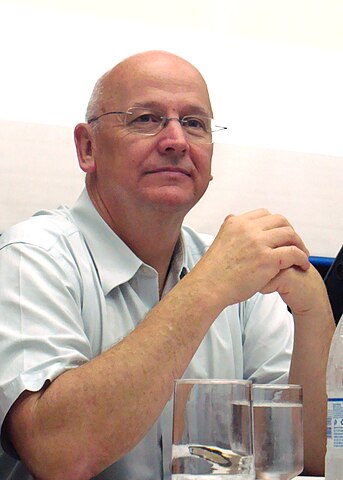MR writes: “I would like to know if there is any concern with Fr Lawrence Freeman prayer techniques. He proposes to use a mantra which seems to be a little strange. I would like to see if there is any literature to give some good discernment of this.”
Father Laurence Freeman, OSB is the successor to Father John Main, OSB who taught an eastern style of meditation that makes use of a mantra. Main learned his technique from his Hindu teacher, Swami Satyananda, and alleges that this technique was also taught by St. John Cassian and the anonymous author of The Cloud of Unknowing.
Freeman was associated with Main before he entered the Benedict when Main served as his spiritual guide. Eventually, when he entered the novitiate, he studied under Main and later assisted him in the establishment of the first Christian Meditation Centre in London in 1975. The two then traveled to Canada where they established a small Benedictine community devoted to teaching and practicing meditation.
When Main died in 1982, Freeman succeeded him and established the ecumenical World Community for Christian Meditation in which he serves as a spiritual teacher. There are presently about 27 of these centers located in 50 countries around the world.
According to Freeman, he describes Christian meditation as “our journey of consciousness” where we shift the center of consciousness from the mind to the heart. “And we do that, not by trying to achieve anything, but simply by being still. Stillness is the primary experience of meditation. So when you meditate, sit physically still. The stillness of body will help to bring you to a stillness within, the stillness of mind.”
He goes on to explain how to achieve this stillness, which is “to take a word, a single word, short phrase, a sacred word, a mantra, and to repeat this word continually, gently, faithfully, attentively, during the time of the meditation. The saying of the word is what focuses our consciousness. It’s what stills the mind. It’s what takes the attention off our busy, active and distracted minds. So you don’t have to fight your distractions. Just let them go. And when you do get distracted which, of course, happens all the time, when you do get distracted simply come back to the saying of your word.”
He recommends this kind of meditation be done twice a day for about 20 minutes – precisely what is taught in Transcendental Meditation.
Freeman talks about the pure prayer of St. John Cassian as a basis for this technique and says that the saint’s endorsement of the repetition of a Biblical mantra is meant to lead us to poverty of spirit through the renunciation of all thought and imagination, “ultimately all sense of ego”.
However, Cassian’s own words say that “The unceasing recitation of the Holy Words should bring the soul into a climate, into a disposition, from which its own prayer can arise spontaneously.”
If we’re using a mantra to lead ourselves to prayer, then it’s okay (provided it’s a Christian word and not the name of a Hindu god); but if we’re just sitting in prayer for 20 minutes using a sacred word to dispel thought and impressions, then we’re not praying.
Unfortunately, this is the way mantra-based meditation techniques are being taught in too many places, including these “meditation centers” and parish groups. Added to this problem is the fact that it is generally being presented to beginners in prayer who do not yet understand the subtleties of the interior life and God’s way of communicating with us.
As a result, they use the mantra too forcefully, to blank their minds, thus inducing within themselves an altered state of consciousness which can bring about feelings of peace and joy that they mistake as an action of God rather than a result of being in an altered state. In so doing, they begin to “thirst” for what is not God.
Instead, they should be taught true Christian meditation and leave the loftier Cassian-style techniques for later.
As the Catechism teaches: “Meditation engages thought, imagination, emotion and desire. This mobilization of faculties is necessary in order to deepen our convictions of faith, prompt the conversion of our heart, and strengthen our will to follow Christ. Christian prayer tries above all to meditate on the mysteries of Christ, as in lectio divina or the rosary. This form of prayerful reflection is of great value, but Christian prayer should go further: to the knowledge of the love of the Lord Jesus, to union with Him” (No. 2708)
Although there are many ways to meditate, the intent of authentic Christian meditation is to bring us into loving union with Jesus, something that cannot come about unless we are experiencing a genuine relationship with Him. And in order to do that, we must communicate with Him, dialogue with Him, ponder His teachings and the events of His life. In other words, we must engage our senses, not disengage them!
Otherwise, we run the risk of falling into what the Catechism calls “erroneous notions of prayer”.
“Some people view prayer as a simple psychological activity, others as an effort of concentration to reach a mental void. Still others reduce prayer to ritual words and postures. . . .” (No. 2726)
It’s too easy for a person to forget that “prayer comes also from the Holy Spirit and not from themselves alone.”
In other words, the Spirit should be in charge of our efforts to meditate – not ourselves or any technique we might acquire.
© All Rights Reserved, Living His Life Abundantly®/Women of Grace® http://www.womenofgrace.com
Send your New Age questions to newage@womenofgrace.com










